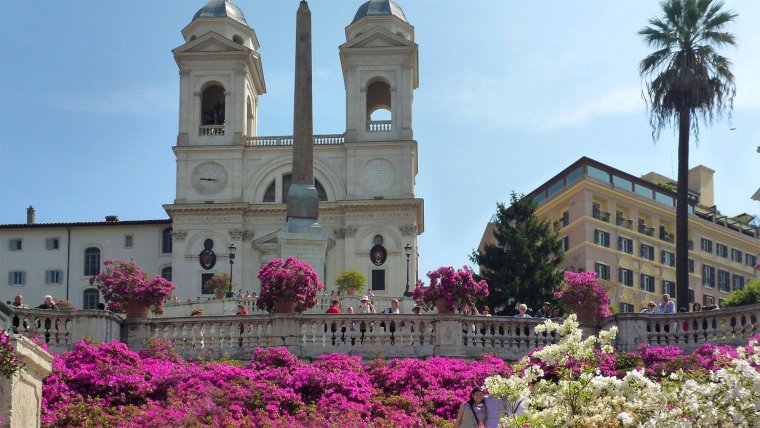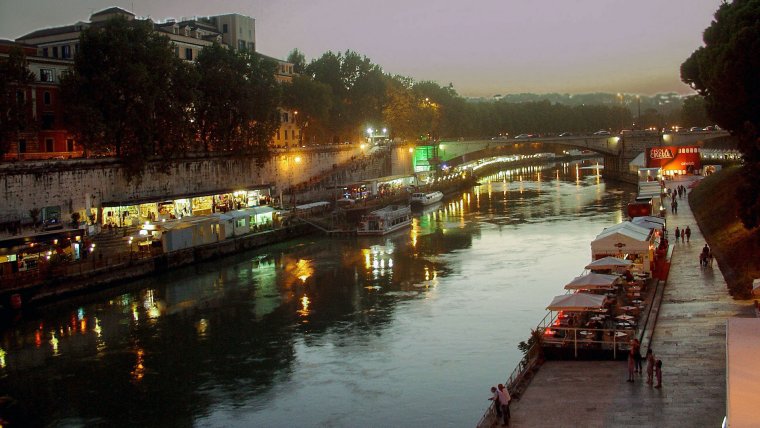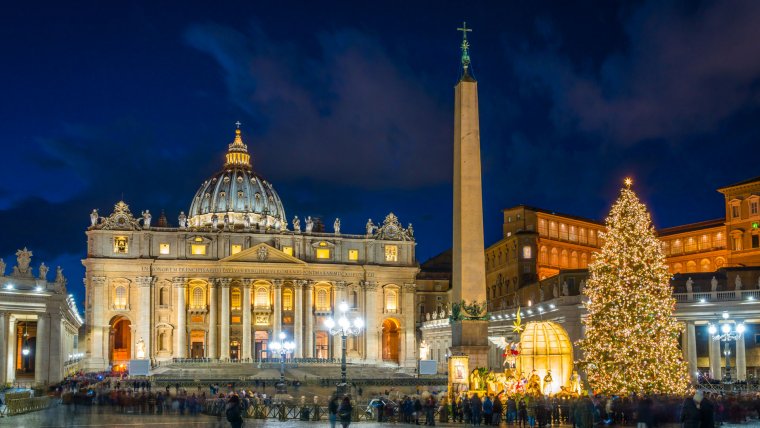Rome is a wonderful city in any season of the year, but the best times to visit the eternal city are certainly Spring and Autumn. In these seasons, a light breeze and a particularly mild climate invite you to walk and even go out of town for a few pleasant trips.
In winter, the weather is often overcast and rainy, while in summer, if you suffer from the heat, your stay in the city may be less pleasant for you.
Religious celebrations, such as Easter and Christmas, are particularly popular in Rome. But in the city, many popular festivals take place throughout the rest of the year. We recommend, for example, “La Festa de ‘Noiartri” (Our Feast) in the charming district of Trastevere, or “La Festa Dei Fiori” (Flower Festival) in Genzano. While throughout the province, numerous festivals and village feasts celebrate the season thanks to the local products of the land.
Rome Weather How to dress in Rome depending on the season
Spring: you’ll need light clothing for the day, such as T-shirts, leggings, skirts with light tights, cotton sweaters, sneakers. Don’t forget a jeans jacket or light leather jacket for the evening with a light scarf.
Always carry both a portable umbrella and sunscreen with you. And if you suffer from allergies, we recommend antihistamines.
Autumn: you’ll need not very warm clothing: t-shirts, jeans and leggings, light sweatshirts, a jeans jacket and, why not, a swimsuit.
You main need rain shoes, a raincoat, and an umbrella.
Winter: you’ll need a warm coat, maybe a raincoat, and umbrella. As temperatures can go from 20 to 4 degrees Celsius, we recommend that you always dress in layers, with a T-shirt, a sweater, and a heavy jacket for the evening. Scarves, hats and woolly gloves can be very useful on the coldest days of January and February.
Summer: you’ll need a lot of t-shirts, Bermuda shorts and hundreds of water bottles.
If you are willing to visit churches, we advise you to avoid hot pants and low-cut tank tops or flip-flops because many churches may not let you in.
And don’t forget a good sunscreen.
As for shoes, always wear comfortable shoes to walk peacefully through the streets of the city.
Rome Weather: What to do in Spring

Spring in Rome is a mild and not very rainy season. During the Easter period, the weather is variable. Pleasant days, with maximum temperatures between 18/20 degrees Celsius, alternate with others a little colder.
Towards the end of April, the days get hot, and towards May temperatures exceed 20 degrees.
In the middle of May, the capital blossoms, and an afternoon breeze cools the days. Sometimes some rain cools the temperature, especially in the first half of the month.
As we said, from a climactic point of view, spring is the best time to visit the city. In this season, many tourists swarm across the streets, villas, museums, and churches of the capital.
The air you breathe is crisp and lively, and visitors’ eyes never tire of admiring how much beauty and history shines through in every corner of the city.
In the countryside, near the Roman castles, and along the coast, people storm restaurants until late at night.
In May, the average temperature is around 20 degrees. This climate makes the holiday particularly pleasant at all hours of the day. However, you can’t rule out sudden rain showers, which is why we recommend carrying a small travel umbrella with you at all times.
During April, azaleas sprout in the pots of Via Veneto and along the steps of Trinità Dei Monti. When the roses begin to bloom, in front of the Circus Maximus, the Rose Garden opens to the public.
Also, in May, for two weeks, Via Dei Coronari hosts the festival of antique street dealers. The atmosphere is very suggestive, especially in the evening, while Via Margutta hosts an important outdoor painting exhibition.
In May, two prestigious sporting events take place in Rome, as well. Villa Borghese hosts the International Horse Racing Competition, and the Foro Italico hosts the International Tennis Championship, Internazionali d’Italia.
Main Spring Events in Rome
- Feast of Saint Francesca Romana (March 9). Blessing of the vehicles.
- Feast of Saint Joseph (March 19) at the Triumphal. Music and stalls in the streets.
- City of Rome Marathon (at the end of March).
- Spring Festival (March/April), Trinità Dei Monti. All the streets of the city are decorated with azaleas and concerts are held throughout the city.
- Holy Friday (March/April), Colosseum. Way of the Cross (Via Crucis) led by the Pope.
- Easter (March/April), St. Peter’s Square. “Urbi et Orbi” Papal blessing.
- “Genetliaco”: Celebrations for the Birthday of Rome (21st April), Piazza del Campidoglio, and elsewhere.
- Culture Week (April). Free admission to most museums.
- Painting exhibition (April/May), via Margutta.
- International Horse Racing Competition (May), Villa Borghese.
- International Tennis Tournament (May), Foro Italico.
Rome Weather: What to do in Summer

From mid-June to the end of August, the days become warm and sunny. Sometimes, in the afternoon, especially in areas far from the sea, rare thunderstorms can occur.
An afternoon breeze, called “ponentino,” mitigates the temperatures a bit, especially in the south-west part of the city, towards the sea.
In the city center, the temperature remains above 20 degrees, even at night. For this reason, the nights can be sultry.
On warmer days, temperatures can reach 34/35 degrees, and sometimes even 38.
Along the Roman coast, the temperature is generally 4/5 degrees lower than in the city center, and the summer heat is lower.
In June, the Roman concert season begins. These performances take place in various squares, palaces, courtyards and churches in the city.
In July and August, open-air opera performances take place in various locations, and all kinds of cultural events take place throughout the season: cinema, music, dance, and theatre.
In the summer evenings, on the waterfront, you can walk among the lights of stalls and attractions of all kinds. The atmosphere in the city is pleasant and entices you to stay awake. Towards the end of July, the “Festa de’ Noantri” is celebrated in the district of Trastevere. On this occasion, it is easy to dine in outdoor restaurants and watch fireworks.
The “Festa de Noantri” (Our Feast) is a typical neighborhood festival of Roman citizens. Viale Trastevere is full of stalls and kiosks selling the traditional Roman spiced roast pork (porchetta).
July is also the period of the summer sales while on the steps of the Spanish Steps, there is an haute couture parade. Most Romans leave the city during the summer school closures, but despite the departure of locals, many tourists flock to the city’s restaurants, cafes, hotels, and churches.
Main Summer Events in Rome
- Flower Festival in Genzano. During June at the Roman castles, in the south of Rome, enchanting flower arrangements cover the streets.
- Feast of St. John (23-24 June), Piazza di Porta San Giovanni. Stewed snails and pork are the characteristic foods of this festival. And the fireworks color the sky.
- Feast of St. Peter and Paul (29 June). Various celebrations take place in many churches.
- TeverExpo (end of June-mid July) along the Tevere river, there are craft, cooking, and music events.
- Festa de ‘Noiantri” (end of July) In Zona Trastevere, you will have a great time with food and entertainment until late at night.
- Roman summer. (July and August) In Caracalla, Ostia Antica, in the Lungotevere and in the parks, various cultural events take place with concerts, opera, film screenings.
- Ferragosto (15th August) Santa Maria in Trastevere. The most famous midsummer festival in Italy, celebrating the Assumption of the Madonna.
Rome Weather: What to do in Autumn
From September to November, the climate becomes mild and somewhat humid. The sunny days alternate with more cloudy and rainy ones. In this season, the southern winds of libeccio and sirocco are felt, and during the night, there can sometimes be intense thunderstorms.
These days, especially in the first half of October, there are still some beautiful sunny days, which are called “ottobrate.” The maximum temperatures are around 23/25 degrees, while with the arrival of the warm sirocco wind, the temperatures can reach 28/30 degrees.
From November, the rainfall increases, and the temperature drops significantly. Towards the end of the month, the weather generally begins to take on winter characteristics.
September and October are the best months to visit Rome. The heat of July and August is now over, but you can still sit at outdoor tables in bars and restaurants even in the late hours. November is not a very advisable month to visit Rome, because the rains can be heavy and long-lasting.
October is also the month of antique dealers. Several antique fairs are held both in Rome and in Lazio, in Viterbo. And if you are passionate about antiques, we suggest you also go as far as Orvieto and Perugia, in Umbria. They are about an hour’s drive from Rome and are two wonderful cities.
Autumn is also a special season for the many festivals of natural and local products that you can find throughout the province of Rome. You can taste some of the most popular and unique local products, typical of autumns, such as chestnuts and mushrooms. But there will also be other typical Italian products such as cheese, meat, and fish.
If you are passionate about wine, you must absolutely visit the festival of Marino. Here you can taste the famous wines of the Roman castles.
A typical Italian autumn attraction is that of the street vendors of roasted chestnuts. Of course also in Rome, you will find them on the street corners with their stalls.
Main Autumn Events in Rome
- Rome Europe. A festival of dance, theatre, cinema, and music.
- The White Night of Rome. (September) For a whole night, usually on Sunday, the entrance to the museums of the city is free.
- Cento Pittori (October) Painting exhibition in via Margutta
- Handicraft exhibition (End of September beginning of October) Via Dell’Orso
- International Film Festival (October)
- Marino Grape Festival (first Sunday of October) in Marino. For the occasion, the wine, not the water, flows from the fountain of the village. You can also attend street performances and tastings of local products.
- Antiques exhibition (Mid October) Via dei Coronari.
- All Saints’ Day and All Souls’ Day (1st and 2nd November)
- Feast of Saint Cecilia (November 22nd)
Rome Weather: What to do in Winter

The winter in Rome is quite mild. The average temperature is about 8 degrees, and sometimes sunny days can occur with maximum daytime temperatures between 12/15 degrees.
At night, however, temperatures easily reach 0 degrees. The cloudy periods, with wind and rain, are milder thanks to the winds coming from the south. And when the Tramontana wind blows from the north, cold but sunny days await you.
On the coldest nights, temperatures can drop to -5 °C in the open countryside. While in the city, frosts are infrequent. Snow is a rare phenomenon that occurs on average, once every ten or twenty years. In recent years, however, snow phenomena have also become more frequent in southern Italy.
As the weather is increasingly unpredictable, we advise you to always consult the weather forecast before going out.
In general, however, we can say that in Rome at the beginning of December you can still appreciate the late autumn weather. While in the second half of February, it may happen to spend a few days in spring.
In the days leading up to Christmas, especially for children, there is a lot of fun. If you visit Rome during this period, you can admire numerous cribs set up in all the churches of the city. In Piazza Navona, you can wander around the many stalls with Christmas decorations and toys.
On New Year’s Eve, people fill the streets celebrating and toasting the New Year.
In February, during the Carnival festival, fancy dress parties are organized, especially in Via Nazionale, and at the Pincio.
Main Winter Events in Rome
- Feast of Our Lady Immaculate (December 8) In Piazza di Spagna.
- Nativity scenes (from mid-December to mid-January) As we said, you can admire numerous nativity scenes in most of the city’s churches and also in St. Peter’s Square.
- Midnight Mass (December 24) takes place in many churches (This is not only a Roman tradition but from all over Italy).
Christmas. In St. Peter’s Square you can benefit from the Pope’s blessing - New Year’s Eve. If you are in the city and the climate allows it, we recommend you to celebrate outdoors and enjoy the fireworks that animate the whole town. But be careful because in Italy it is tradition to throw old broken crockery out the window.
- Befana (6 January) the stalls of Piazza Navona are an attraction not to be missed even for children, at Epiphany
Mean temperatures and Average Climatic Situation in Rome
Final tips
As the dates of many religious and folk festivals can change from year to year, we recommend that you check with the tourist offices or contact us for direct help.
Disclosure: Please note that we may use display advertising, and affiliate links to operate this site, and at no additional cost to you, we may earn a commission if you make a purchase. We recommend only products and services we know and the income allows us to keep the site updated and free of charge. Please review our Terms and Conditions and Privacy Policy for more information.

